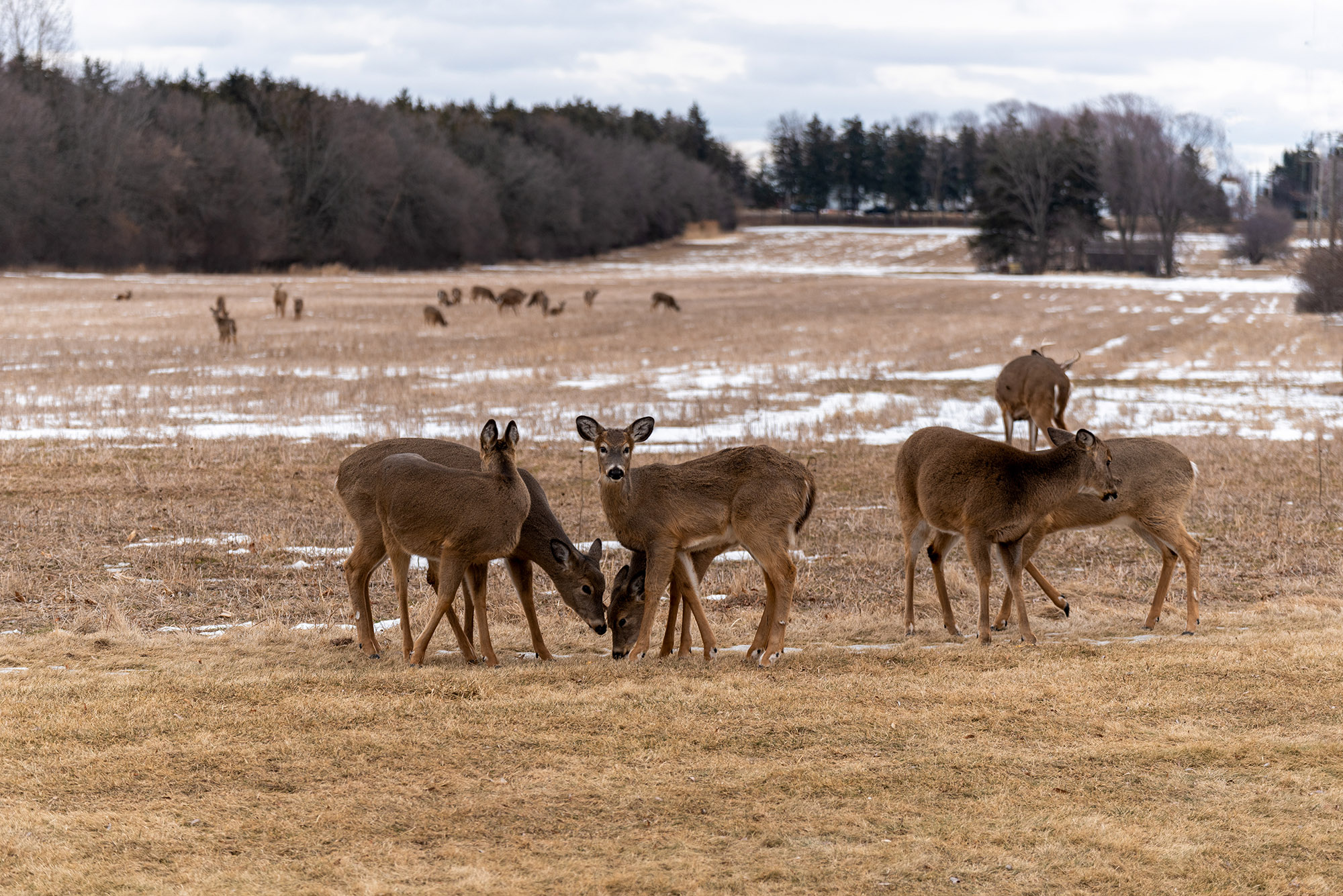Managing free-roaming deer for disease is one of the greatest challenges facing state wildlife agencies today. But biologists with the Michigan Department of Natural Resources, the USDA, and Michigan State University are currently working through the third part of a field study in Alpena County that involves dropping treat balls filled with oral vaccines for bovine tuberculosis around browsing habitat to see if they help prevent the respiratory disease in whitetails, the agency announced on Thursday.
The expectation is that deer will sniff out the clusters of alfalfa and molasses in their feeding areas and eat them, introducing the vaccine to their system. Bovine tuberculosis is a bacterial zoonotic disease caused by Mycobacterium bovis that can pass between deer, livestock, and humans. It causes pus-filled lesions and damage to a host deer’s chest cavity and lungs, and it can sometimes be fatal. It’s spread through nose-to-nose contact and shared food and water sources.
A trial of the oral vaccine with penned deer proved that it was effective in preventing bovine tuberculosis infection and slowing the spread. Now, researchers are in the middle of placing vaccine delivery units, also known as VDUs, around 15 selected parts of Alpena County. They are mostly placed in agricultural fields that are known to hold lots of deer. Researchers have obtained permission from landowners to leave the vaccine balls out in their fields.
In a few weeks, the USDA Wildlife Services branch will harvest multiple deer from these same areas to study how well the oral vaccines worked. The VDUs only remain in the field for two days before any unconsumed ones are removed. The USDA and Michigan State University, both partners in the study, are monitoring the feed sights with cameras for evidence of deer consuming the vaccine treats.
Read Next: Zombie Deer Disease: CWD’s Unfortunate Nickname
The vaccine the deer are eating is similar to the same vaccine humans have received for tuberculosis for over 100 years, MDNR says. Even 100 days after oral vaccination, no trace amounts of the vaccine showed up in muscle samples, which means hunters shouldn’t be worried about harvesting a vaccinated deer. The vaccines are being placed far away from homes and public areas, so the chances that dogs or other domesticated animals will get ahold of them are slim. MDNR also points out that pet owners shouldn’t be concerned since they’ve observed multiple species ingesting the meds without any serious side effects.
“We are supportive of this research and look forward to learning more about how this vaccine can be used to address this disease and keep cattle and other animals, including deer, safe from bTB,” Michigan state veterinarian Dr. Nora Wineland said in the press release.

